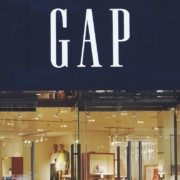Gap And The Contradictory Leadership Challenge
Brands face the challenges of optimizing contradictory customer needs. This is because customer do not want to compromise one benefit for another. Leaders face the same challenges. Leaders must figure out ways to maximize seemingly uncompromising views such as focusing on profitability and sustainability. Or focusing on core customers’ views while satisfying other customers’ views.
Another seemingly difficult leadership challenge is being data-driven rather than creative-driven and vice versa. This is the problem that has faced many retailers. Fashion needs data. On the other hand, fashion decisions, are in many cases, creative, gut-driven decisions. And, data-driven versus creative-driven is apparently seen as a challenge that plagues Gap, the once popular, de rigueur clothing establishment.
A creation from 1969, Gap was a store stocked with Levi’s denims. It promised to never be out of stock. The clothing was available in all styles and sizes. An instant hit with the baby boom cohort (the Gap name came from the concept of the generation gap), soon there were stores nationwide. It was not until the 1980’s that a new CEO focused on raising the style level. Gap was great until it was not great.
In its latest analyst earnings call, Gap signaled a less than encouraging forecast. Reporting indicates that Gap dragged down the overall company (Banana Republic, Athletica, Old Navy and Gap).
One of the problems with brand management and marketing is the mystique of measurement. As business has become more demanding, business has become more defensive. In a world where marketing activities and budgets are being squeezed by limited resources, there is a tendency to over-rely on metrics. Sometimes, leaders allow the mystical muscle of measurement to take over the role of marketing expertise and experience. Creativity is forced to conform to measures. While there is much that we can measure, there is also much that is not measurable. If the value of marketing and creativity need validation within the organization, then the organization has a bigger problem than can be solved through measurement.
It is necessary to recognize that data show us what has happened. Data are backward looking. And, in most cases, data do not tell us why customer behavior is what it is, only what it is now and what it was then.
At Gap, there were CEO’s who leaned towards fixing Gap’s issues by drilling down on what data were showing. Until recently, with the hiring of a creative-style-focused leader, Gap has cycled through executives who, according to The Wall Street Journal, fixed “weak spots here and there but (these) were not the fundamental problem.” Gap’s new CEO is “the first creative-minded leader” in quite a while.
These Gap fixes were important. But, when the enterprise is clothing, creativity is important too. It is possible to maximize creativity and data. All that a brand needs is a leader who is insight-focused acting on informed judgment.
Leadership, regardless of industry, must not allow process to dictate over passion. Leadership must not sacrifice accountability on the altar of measurement. Leadership must not fear failure. When decisions fail, it is very easy to say, “It is not my fault. The measurement process made me do it.”
Disciplined research is an important contributor to effective business management. But, research discipline alone cannot be creative; it cannot be innovative. Measurement can evaluate but not create ideas. Creative ideas require creative insight. People provide these insights based on data and judgment.
Real, actionable insight will not come from superior data analysis. Superior analysis provides understanding of where we are and how we got to where we are. Superior analysis does not provide insight into what kind of future we can create.
Leadership must use their expertise and their judgment. Leadership must use their creativity to make reasoned, informed, and insightful decisions.
In this increasingly competitive, sometimes frustrating brand-business world, there is a pervasive fear of taking the leap of faith based on informed judgment. Informed judgment is not guesswork. Of course, no one intentionally commits valuable resources to something that is likely to fail.
Informed judgment is critical. The emphasis is on “informed.” Personal judgment can become a hindrance to success.
In 2011, Ron Johnson, the former star of Apple’s retail stores, took on the CEO role at J.C. Penney. Mr. Johnson had some ideas as to the direction of J.C. Penney. According to the press, most of these ideas went untested. These ideas were not particularly “informed.” The result was a retail debacle.
On the other hand, informed creativity is a formula for success. The Wall Street Journal cites the case of Abercrombie & Fitch. A new CEO made a huge difference using informed creativity. It was clear that Abercrombie & Fitch’s “cool-kids” approach lost its luster. The brand-business’ revitalization changed the target audience and the over-reliance on logos, “to cater to working-age adults who might be searching for tasteful wedding guest outfits.” This type of rejuvenation relies on creative interpretation of data.
Part of the problem comes from the muddled definitions of information, trends and insights Not only do we tend to use these terms interchangeably but also, we overuse and misuse the word “insight.”
This matters because there is a relationship between information and trends, and trends and insights. Information happens first. Information leads to the generation of trends, which then lead to the creation of insights. It is a process that sets the context for creativity.
Information are facts. And, in our data processing world, information are data that are processed, stored and/or communicated. There are massive amounts of data being processed into massive amounts of information.
A trend is something that is developing or changing. A trend is enduring. A trend is an idea or concept that is happening around us and influencing the way and manner in which we behave.
Trends have implications, of course. And we can generate strategies to address these trends.
But, trends are not insights. Trends are valuable because they inform us about the world around us. But, collecting and analyzing information and turning these into trends are not enough. We must go from information to insight.
Informed insight is not guesswork. Insight means seeing below the surface of information. Insight is all about “why?” This necessitates synthesizing rather than only analyzing. Analysis travels backward. But brand-businesses move forward. Use synthesis. Synthesis means, “the combining of diverse concepts into a new coherent whole.” Analysis leads to understanding what is happening and why. Synthesis leads to insight into what might happen.
Trends are general. It is the insight about the trends that is critical. It means looking under the surface, beyond appearances and seeing ahead. Meaningful insights are more than mere information and trends.
A consumer insight is not what you always believed. A consumer insight is not driven by what the factory makes. A consumer insight is not just information or facts. A consumer insight is not product attributes.
An insight needs to meet two criteria: 1) Surprise at what you learned; and, 2) As a result, a change in behavior based on this learning. An insight is a fundamental consumer truth that has the power to open our eyes. It is relevant, recognizable, believable, ownable, adaptable to geographies and capable of building business for the long-term.
Right now, Gap could use some creativity-driven informed insight. The Wall Street Journal indicates that many on Wall Street are pleased with the choice of a creative leader for Gap. As newly appointed CEO, Mr. Richard Dickson stated that it is time to redefine the Gap’s image for consumers. Mr. Dickson also admitted that many problems were self-inflicted. One way to rejuvenate Gap will be to recognize the limits of data-driven only strategies. Data will be key but as a way to inform judgment, allow executives to take that informed leap of faith, and help evaluate ideas.




